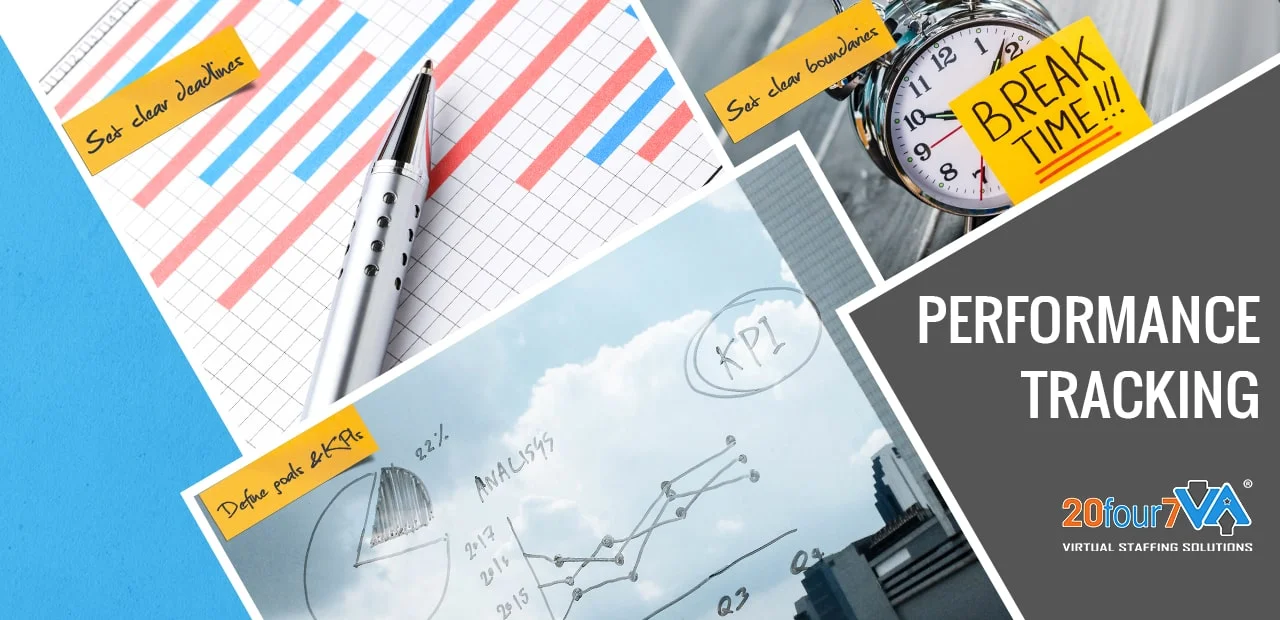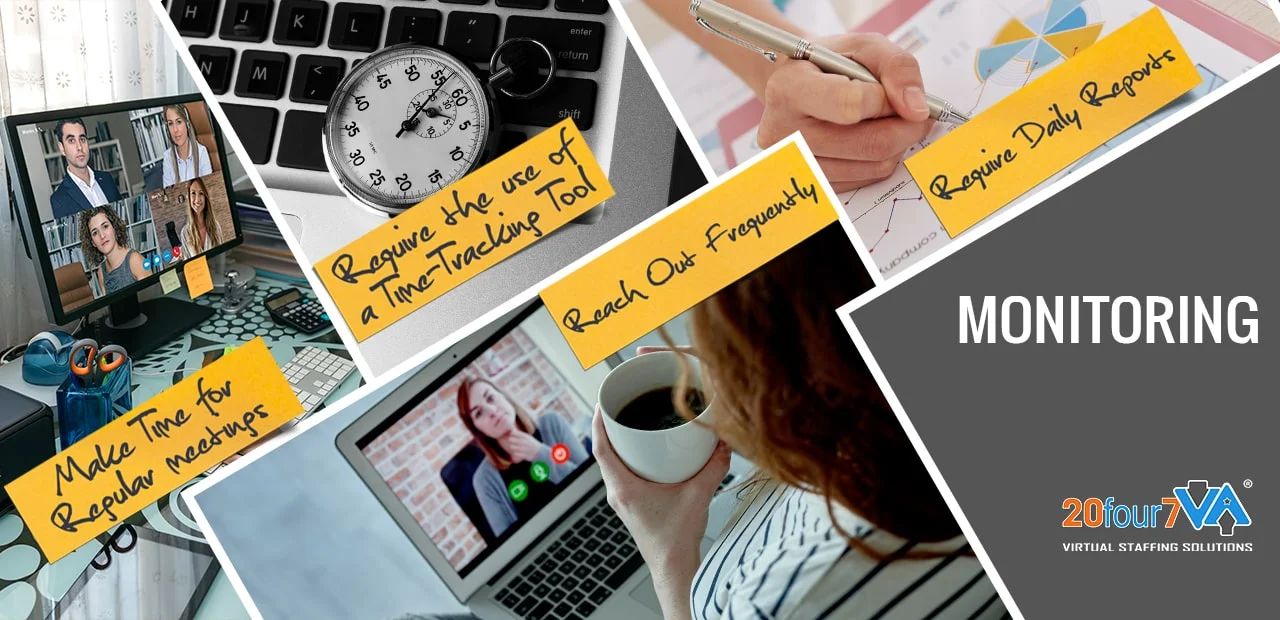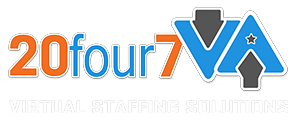Working with a Virtual Assistant Best Practices: Part 2 – Performance Tracking, Monitoring, and Incentivizing
![]()
Now that we’ve gone over how to screen, hire, and onboard a virtual assistant (VA), let’s talk about the next stage: working with a virtual assistant.
As many business executives will attest, virtual assistants are an invaluable asset. When you compare a virtual assistant vs an employee, you’ll find that VAs offer much of the same in terms of skills and competence but cost significantly less. These multi-skilled and dedicated professionals help you lower your operational costs, save you from the drudgery of menial tasks, and allow you to do what you do best: run your business.
But while hiring a virtual assistant solves many workload-related challenges, it does have a few drawbacks. One is that monitoring a virtual assistant’s productivity can be tricky. Another is that people who work remotely can sometimes feel isolated.
Because virtual assistants are not in the office with you, you can’t stop by their desks to check on a project or chat about the latest Netflix hit as you wait for a meeting to start. If you don’t consciously create opportunities for engagement online, you’ll miss out on those fleeting but crucial moments that help build and solidify a relationship.
So how do you make sure that your VA is doing the work that you’re paying for? And doing it correctly? How do you work productively with a virtual assistant? Here are some tried-and-tested tips for performance tracking and for monitoring and incentivizing your virtual assistant.

Tracking Your VA’s Performance
Ensuring that your virtual assistant is productive is an ongoing process that begins with setting clear expectations. Here’s what you need to do:
Define goals and KPIs
Setting measurable and realistic objectives helps your virtual assistants prioritize their tasks, organize their schedules, and understand the goals for each project. Make sure that metrics and key performance indicators (KPIs) are written down and monitored daily. According to Dr. Gail Matthews, a psychology professor at the Dominican University in California, people are 42% more likely to achieve their goals when they take the time to write those goals down.
KPIs also allow you to gauge your VA’s productivity and evaluate the impact of the VA’s work on your business. Your KPIs should be as specific as possible and should reflect your overall goals for the company. Common KPIs include conversion rate, customer retention rate, leads generated, and total sale value.
Set clear deadlines
Help your VAs meet deadlines by clearly defining what needs to be done every week. It’s also important to set clear timelines for every project. Your virtual assistants will be better able to manage their time and be more efficient when they know precisely when tasks should be completed and when every deliverable should be in your inbox. Setting deadlines also helps you measure progress and boost your staff’s productivity.
Communicate with your virtual assistants to make sure that timelines and deadlines are achievable. While efficiency is king, you don’t want to compromise quality. Make sure to set target dates that allow your virtual assistant enough time to get things done to your standards.
Set clear boundaries
Set your VA’s working hours — and make sure you both follow them. According to this Harvard Business Review article, it’s time for business leaders to rethink what are considered “high-performing” attributes in remote workers. These include working long hours, working during weekends, and answering emails and instant messages after office hours.
Pushing VAs to their limits will only result in burnout. Let your virtual assistants know that while you expect them to do their best, it’s also OK to slow down and take a mental health day occasionally.

Monitoring Your VA
You need to monitor your VAs not just to check their efficiency but to keep tabs on their morale and check for signs of burnout. Follow these best practices on how to work with a virtual assistant smoothly and effectively:
Require daily reports
The easiest way to gauge your VAs’ productivity is to have them create a report detailing the tasks they performed during the day.
An end-of-day report is useful in many ways. Besides helping you keep track of your VA’s activities, it keeps you updated on the status of projects and tells you how much time is being spent on them. End-of-day reports also serve as historical records that can be reviewed to evaluate an employee’s performance or get insight on a particular project or interaction with a client.
Make time for regular meetings
Research shows that boosting engagement for remote workers results in higher productivity and creativity, lower turnover, and even reduced costs. One of the most effective ways to keep VAs and other remote workers engaged is to create an internal communication system that keeps everyone informed and connected.
Schedule weekly 1:1 meetings with your VA so you can talk about the tasks for the week, evaluate the progress made during the previous week, discuss how to overcome any challenges the VA is facing, and make sure there are no misunderstandings. A regular all-hands meeting is also a great way to keep your entire staff aligned with company goals, make sure everyone is on the right track, and foster strong bonds among staff members.
Require the use of a time-tracking tool
When you’re working with virtual staff, you have to take extra steps to make sure that they’re doing the work you’re paying for. As you’re not working in the same office, the best way to do this is to use virtual assistant tracking software that monitors their performance in real-time.
How does virtual assistant tracking work? A virtual assistant time tracking app allows you to track your VA’s hours, keep tabs on the amount of time they spend on projects, and see what websites they’re accessing while they work. Time-tracking apps also let you see your VA’s progress by taking screenshots of their desktop at regular intervals. These programs also typically have an idle detection feature that automatically clocks out your VA when no keyboard or mouse movement is detected. This ensures that your VA was not idle during the hours billed.
Reach out frequently
Monitoring your virtual assistant’s emotional state is just as important as tracking their hours. Why? Because employees who are happy and engaged tend to be productive, while those who are stressed or who feel anxious and disconnected tend to be ineffective.
Set up a group chat for non-work banter so that your VAs can stay in the loop and get to know the rest of the team. Check in and ask them about their day, how they’re coping with their workload, and what their obstacles are. Of course, not all employees will be forthcoming when asked these questions. Consider setting up anonymous feedback surveys so that everyone can voice their needs.

Incentivizing Your VA’s Hard Work
You’ve defined expectations and are monitoring your VA’s productivity and engagement. You’re off to a great start! Now you just have to keep your VAs motivated by incentivizing their hard work. Here’s how:
Recognize their wins
Recognition is one of the most powerful motivators in the workplace. It’s even more important for those who work remotely. While virtual assistants are paid contractors and are expected to accomplish every task assigned to them, positive feedback and praise will show them that you appreciate their work and motivate them to put in more effort.
Take it up a notch by publicly acknowledging your VAs when they meet a goal or celebrate a milestone. Something as simple as an announcement in your staff chatroom can go a long way towards making your VA feel valued.
Celebrate with simple gifts
Aside from publicly recognizing your VA’s accomplishments, you could also show your appreciation with something tangible. Consider sending a card signed by the entire team or a gift card from a store in your VA’s locale. You can also have flowers or a birthday cake delivered to your VA’s home. People love receiving simple but thoughtful treats, and your VA is certainly no exception!
Provide opportunities for learning and development
Most VAs are eager to learn new skills and expand their knowledge. Give them the opportunity to do so! Not only do you incentivize your VA’s good performance, but you also benefit your company by increasing your workforce’s skillset. Make it more economical by subscribing to a membership plan that gives your entire office access to online training courses.
Final thoughts
Don’t leave your VA hanging after you hire and onboard them. Without defined parameters, you won’t be able to evaluate your VA’s contributions. It will also be harder to determine whether or not hiring a virtual assistant was worth it. Take the time to define goals, timelines, and boundaries, and recalibrate as needed.
Similarly, if you don’t track your VA’s working hours, encourage them to engage, or provide incentives for hard work, you’ll miss out on the opportunity to maximize their potential and ensure a good return on your investment. Try to strike a balance between tracking your VA’s productivity and trusting your VA to do the work without supervision. And if goals aren’t being met, don’t hesitate to start a conversation and see where you need to go from there.
Next up: the third and final post in this series tackles the most common problems clients encounter and how to resolve them. Subscribe to the blog to receive this and the latest blog posts straight in your inbox!











